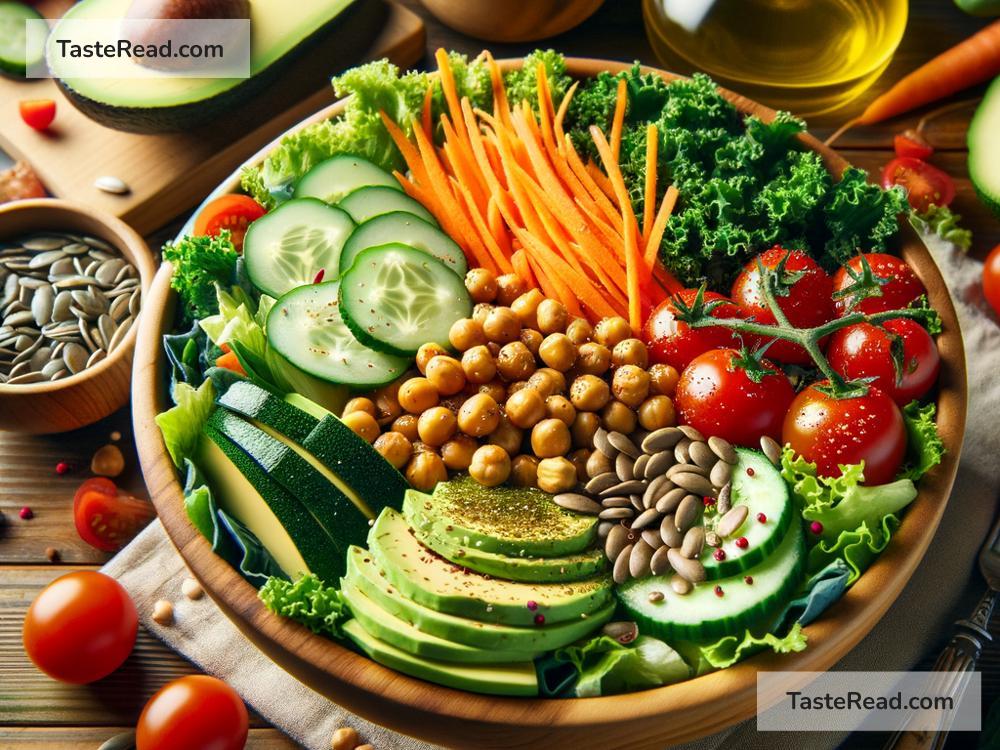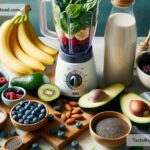How to Create a Nutrient-Dense Salad
Salads are a fantastic way to enjoy a healthy, balanced meal. They are not only delicious but also packed with essential nutrients that your body needs to stay energized and strong. However, not all salads are created equal—some can end up being plain or low in nutrition. The key to creating a nutrient-dense salad is choosing the right mix of ingredients to ensure you get plenty of vitamins, minerals, fiber, and protein in every bite. Here’s how you can create a nutrient-dense salad that’s both tasty and super healthy, using simple steps anyone can follow.
Step 1: Start with a Base of Leafy Greens
The first step in building a nutrient-dense salad is choosing your base. Leafy greens are the foundation of your salad and provide a range of vitamins, minerals, and fiber. Dark, leafy greens like spinach, kale, arugula, Swiss chard, and romaine lettuce are especially nutrient-rich. For example:
- Spinach: Packed with iron, magnesium, and vitamin K.
- Kale: Full of antioxidants and vitamins A, C, and K.
- Arugula: Low-calorie and rich in calcium and potassium.
Feel free to mix different greens together for added variety and flavor. Try to avoid iceberg lettuce as your main base—it has fewer nutrients compared to other leafy greens.
Step 2: Add Colorful Vegetables
The more colorful your salad is, the more nutrients it contains. Vegetables are rich in vitamins, minerals, and fiber, and they also make your salad more visually appealing. Here are some great options to include:
- Bell Peppers: Loaded with vitamin C and antioxidants.
- Carrots: High in beta-carotene and vitamin A.
- Tomatoes: A great source of vitamin C and lycopene (an antioxidant).
- Cucumber: Hydrating and full of vitamin K.
- Red Cabbage: Packed with vitamins C and K, plus fiber.
Aim to include at least three different colorful vegetables for maximum nutrition. Chop them into bite-sized pieces and toss them into your salad.
Step 3: Include a Source of Protein
Protein is essential to help you feel full and energized after eating your salad. It supports muscle growth, repair, and other critical functions in the body. Adding a source of protein to your salad elevates it from a side dish to a complete meal. Here are some protein options to consider:
- Grilled Chicken: A lean protein option that’s delicious and versatile.
- Beans or Legumes: Chickpeas, black beans, and lentils are great plant-based sources of protein.
- Eggs: Hard-boiled eggs provide protein along with healthy fats.
- Tuna or Salmon: Canned tuna or grilled salmon add omega-3 fatty acids and protein.
- Tofu or Tempeh: Perfect for vegetarians or vegans looking for a protein boost.
Pick one or two protein options and add them to your salad for greater nutritional balance.
Step 4: Throw in Healthy Fats
Healthy fats are important for your body, as they help absorb certain vitamins and support your brain and heart health. Adding a small amount of healthy fats to your salad makes it more satisfying and flavorful. Consider these options:
- Avocado: Creamy, delicious, and full of heart-healthy monounsaturated fats.
- Nuts: Walnuts, almonds, or cashews add crunch and omega-3 fatty acids.
- Seeds: Chia seeds, flaxseeds, and sunflower seeds provide antioxidants and fiber.
- Olive Oil: Drizzle extra virgin olive oil as part of your dressing for added healthy fats.
Don’t go overboard, as fats are calorie-dense—just a small serving is enough.
Step 5: Add Whole Grains (Optional)
If you’re looking for a heartier salad, adding whole grains can take it to the next level. Whole grains provide complex carbohydrates, fiber, and additional nutrients. They’re especially good if you’re eating your salad as a main meal. Some great options include:
- Quinoa: High in protein, fiber, and essential minerals.
- Farro: Nutritious and chewy, packed with protein and fiber.
- Brown Rice: A simple, wholesome grain.
- Barley: Good for digestion and loaded with vitamins and minerals.
Cook your grains in advance and let them cool before adding them to your salad.
Step 6: Make a Healthy Dressing
A healthy salad dressing ties all the ingredients together and adds a burst of flavor. While store-bought dressings can be convenient, they often contain added sugar, unhealthy oils, and preservatives. It’s better to make your own dressing using healthy ingredients. Some simple dressing ideas include:
- Olive Oil and Lemon Juice: Light, refreshing, and full of healthy fats.
- Greek Yogurt Dressing: Creamy and tangy, with added protein.
- Balsamic Vinegar and Olive Oil: Classic and flavorful without extra calories.
Use just enough dressing to coat your salad—you don’t want to drown it!
Step 7: Top It Off with Extras
Finally, add some finishing touches to make your salad exciting. These extras can provide crunch, flavor, or additional nutrients:
- Herbs: Fresh parsley, cilantro, or basil add flavor and antioxidants.
- Cheese: A sprinkle of feta, goat cheese, or Parmesan for extra taste (choose sparingly).
- Cranberries or Raisins: Add natural sweetness and texture.
- Crunchy Toppings: Think roasted chickpeas, croutons, or seeds.
Final Thoughts
Creating a nutrient-dense salad is simple—you just need the right mix of greens, colorful vegetables, protein, healthy fats, and optional extras like grains and dressing. By following these steps, you can make salads that are not only satisfying but packed with everything your body needs to thrive. So go ahead, get creative, and enjoy the endless possibilities of a nutrient-rich salad!


